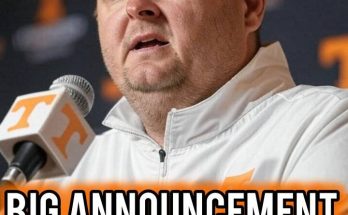Ben Simmons’ name is once again surfacing in NBA free agency conversations, but what once looked like a possible career-reviving landing spot with the Boston Celtics may now be slipping through his fingers. The narrative that Simmons could join the Celtics—a franchise fresh off a title run but now undergoing roster turbulence—has taken a sharp turn, fueled by cap complications, roster developments, and shifting priorities. Reports indicate that the Celtics’ pursuit of Simmons is “potentially dead,” a striking reversal that captures just how volatile the free agency market has become for the once-hyped All-Star.
To understand why Simmons to Boston seemed plausible—and why it now looks unlikely—it’s important to examine the sequence of events that led to this moment.
Simmons has had a turbulent few years. Once considered one of the NBA’s brightest young stars, his career took a nosedive following his playoff meltdown with the Philadelphia 76ers in 2021. The fallout led to his high-profile trade to the Brooklyn Nets in 2022, but injuries and persistent questions about his offensive limitations derailed any hopes of a fresh start. Over multiple seasons, Simmons played sporadically, his back injuries proving to be more serious and persistent than initially feared. By early 2025, he had become a shell of his former self: a versatile defender and playmaker who no longer looked comfortable on an NBA court.
The Nets, having run out of patience, reached a buyout agreement with Simmons in February 2025. The Los Angeles Clippers then picked him up, hoping to squeeze some value out of him down the stretch. While he logged minutes off the bench, his impact remained modest, averaging under 5 points per game with declining usage. While he still showed flashes of the elite defense and court vision that once made him a coveted asset, those moments were fleeting. He was no longer a centerpiece, but rather a reclamation project.
As Simmons hit free agency once again in the summer of 2025, some franchises reportedly viewed him as a low-risk, high-upside signing. Among those rumored to be interested were the Celtics. At face value, Boston made sense. With Kristaps Porziņģis sidelined indefinitely and Al Horford nearing retirement, the Celtics were clearly in need of frontcourt depth. Simmons, standing at 6’10”, could theoretically fill that void, providing ball-handling and defense in a hybrid forward-center role. Moreover, Boston’s core of Jayson Tatum and Jaylen Brown, plus a strong supporting cast, might offer Simmons a stable environment to reinvent himself.
But the situation in Boston was more complex than it appeared. While the Celtics were rumored favorites to land Simmons in early free agency betting markets, the reality of their roster constraints quickly clouded the picture. The Celtics were well above the NBA’s second tax apron, meaning they couldn’t take on contracts via sign-and-trade, use mid-level exceptions, or aggregate salaries in deals. Their only feasible way to add Simmons would be via a veteran minimum contract. And even then, space on the roster would have to be cleared.
In the meantime, Boston began exploring other avenues to strengthen their bench. One of the more intriguing developments came in the form of Charles Bassey—a young, energetic center who made a strong impression during the Celtics’ Summer League run. Bassey’s emergence reportedly changed the internal calculus. He was cheaper, younger, and a more traditional center option. If Boston committed a roster spot to Bassey, the opportunity to sign Simmons might evaporate altogether. While Bassey lacks Simmons’ star pedigree, he presents fewer complications. He isn’t looking for a redemption arc—he’s looking for a chance.
That brings us to the present. Reports suggest that Simmons is still weighing multiple offers or expressions of interest from teams like the New York Knicks, Phoenix Suns, and Sacramento Kings. All three franchises could offer him minutes, structure, and in some cases, a better stylistic fit. The Knicks and Suns, in particular, reportedly have more concrete plans for his potential role than Boston. Those discussions have gained traction just as Boston appears to be backing away.
Beyond the logistics of contracts and roster spots, there’s also the matter of fit. Simmons, even at his peak, has never been a floor spacer. His reluctance—or outright refusal—to shoot from distance remains one of the most scrutinized aspects of his game. And Boston, one of the league’s most three-point reliant teams, built its recent success around spacing, ball movement, and perimeter threats. Integrating Simmons into that system would be tricky. He operates best with the ball in his hands, in transition, or driving to the basket. But Boston already has playmakers. In half-court settings, Simmons’ offensive limitations could become a liability, especially if defenses ignore him beyond the arc and clog driving lanes.
In addition, the Celtics are entering a transitional year. Jayson Tatum is reportedly rehabbing an Achilles injury and may miss a significant portion of the upcoming season. That puts pressure on the front office to maintain a competitive roster while also preparing for the long term. Betting on Simmons might not align with that timeline. He’s no longer a quick fix, nor a player who can anchor a team. At this stage, he’s a gamble—and the Celtics may not be in the mood to roll the dice.
There’s also internal development to consider. The Celtics have invested time in younger players—Luka Garza, Hugo Gonzalez, and Josh Minott among them. These prospects, while unproven, come with upside and fewer question marks. Boston might prefer to invest minutes in developing its future rather than dedicating playing time to a player who, while experienced, hasn’t been able to stay on the court consistently. In that context, Simmons becomes not only a questionable fit, but also a potential obstacle to the growth of younger talent.
From a financial perspective, the margins are razor-thin. Boston’s payroll is bloated due to multiple large contracts, and they’re facing severe luxury tax penalties. Any addition must be carefully evaluated—not just in terms of talent, but also cost-effectiveness and opportunity cost. Signing Simmons, even at the veteran minimum, would force the team to waive or trade someone else, possibly incurring more financial strain or disrupting locker room chemistry.
By early August, the consensus among insiders began to shift. While Simmons had once been viewed as a likely Celtic, that possibility has since cooled. Some insiders now believe that the window is effectively closed. The headline that the Celtics’ pursuit is “potentially dead” reflects that sentiment. It doesn’t mean there’s zero chance—injuries, trades, or sudden shifts could reopen the conversation—but as things stand, the Simmons-to-Boston storyline appears to have lost its momentum.
This shift reflects a larger truth about Simmons’ standing in the league. Once considered a franchise cornerstone, he now finds himself fighting for relevance. That isn’t to say he has no value—he’s still an elite defender and creative passer—but the league has changed around him. Shooting is king, versatility is prized, and reliability is non-negotiable. Simmons has yet to prove he can meet those standards again. The hesitation from a championship-caliber team like Boston underscores that reality.
For Simmons, this summer represents a career inflection point. Whichever team he signs with next will likely define the trajectory of his NBA future. If he lands in New York or Phoenix and produces, he could rebuild his reputation and earn another contract. If he falters again, he could quickly find himself out of the league. Boston may no longer be part of that journey—but the stakes remain sky-high wherever he lands.
In conclusion, the Celtics’ initial interest in Simmons made sense on paper but quickly ran into real-world limitations: financial barriers, roster competition, and philosophical misalignment. Simmons remains available, and Boston remains a team with needs—but the two appear to be heading in different directions. The possibility of a reunion isn’t entirely off the table, but it would require a significant change in circumstances. As of now, Boston seems poised to explore other options while Simmons seeks a fresh start elsewhere. The door hasn’t slammed shut, but it’s almost closed—and both sides appear content to walk away.



